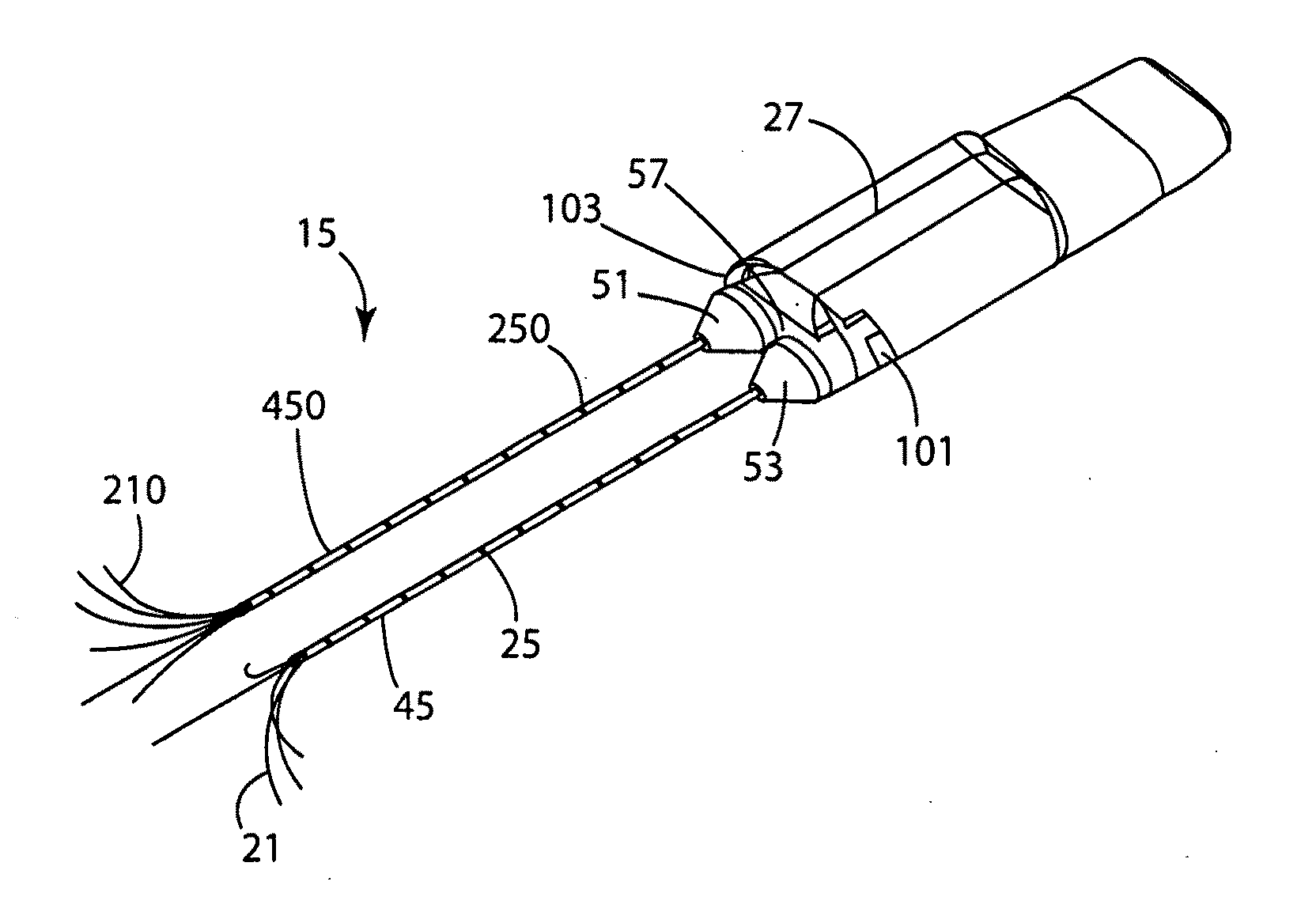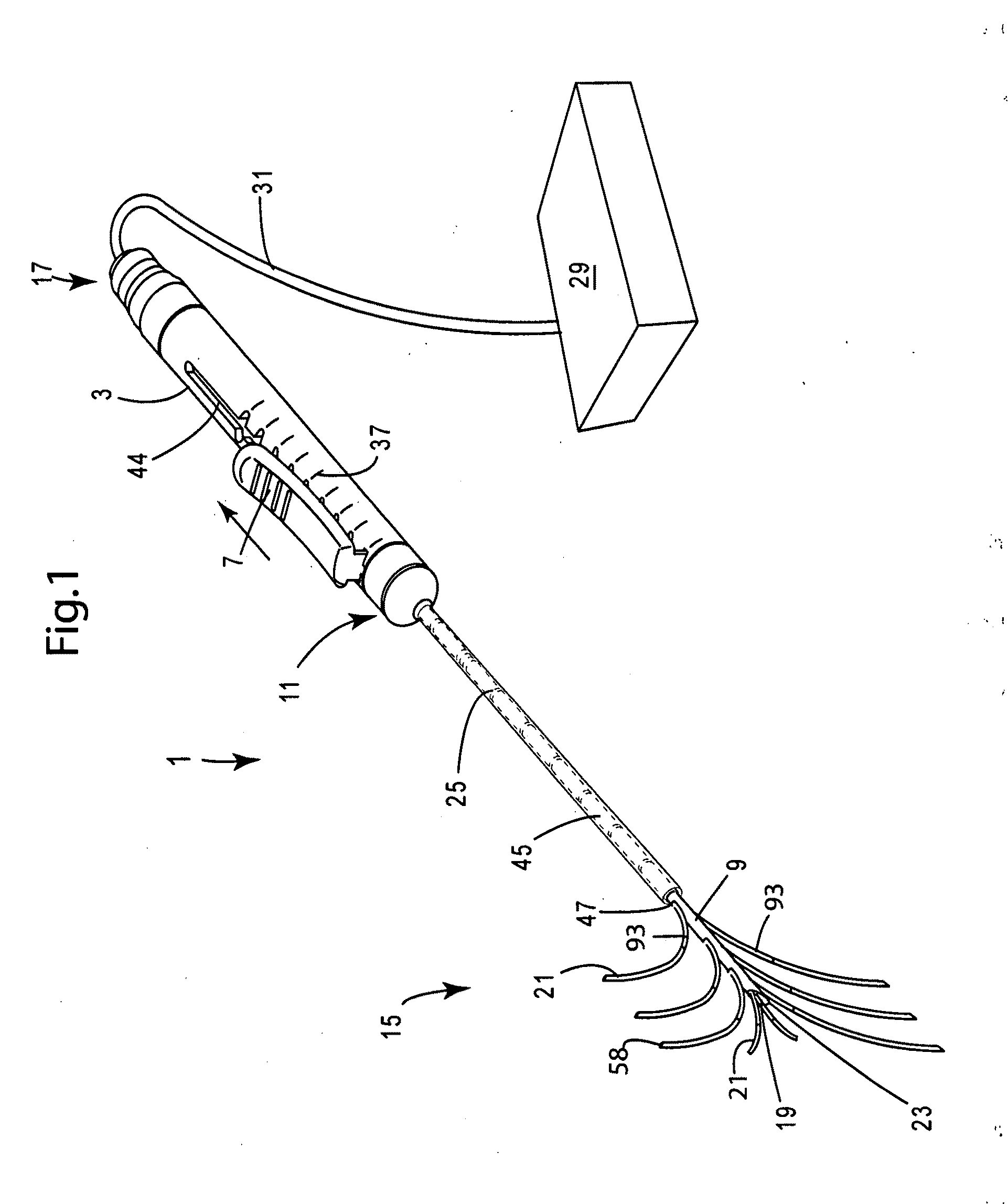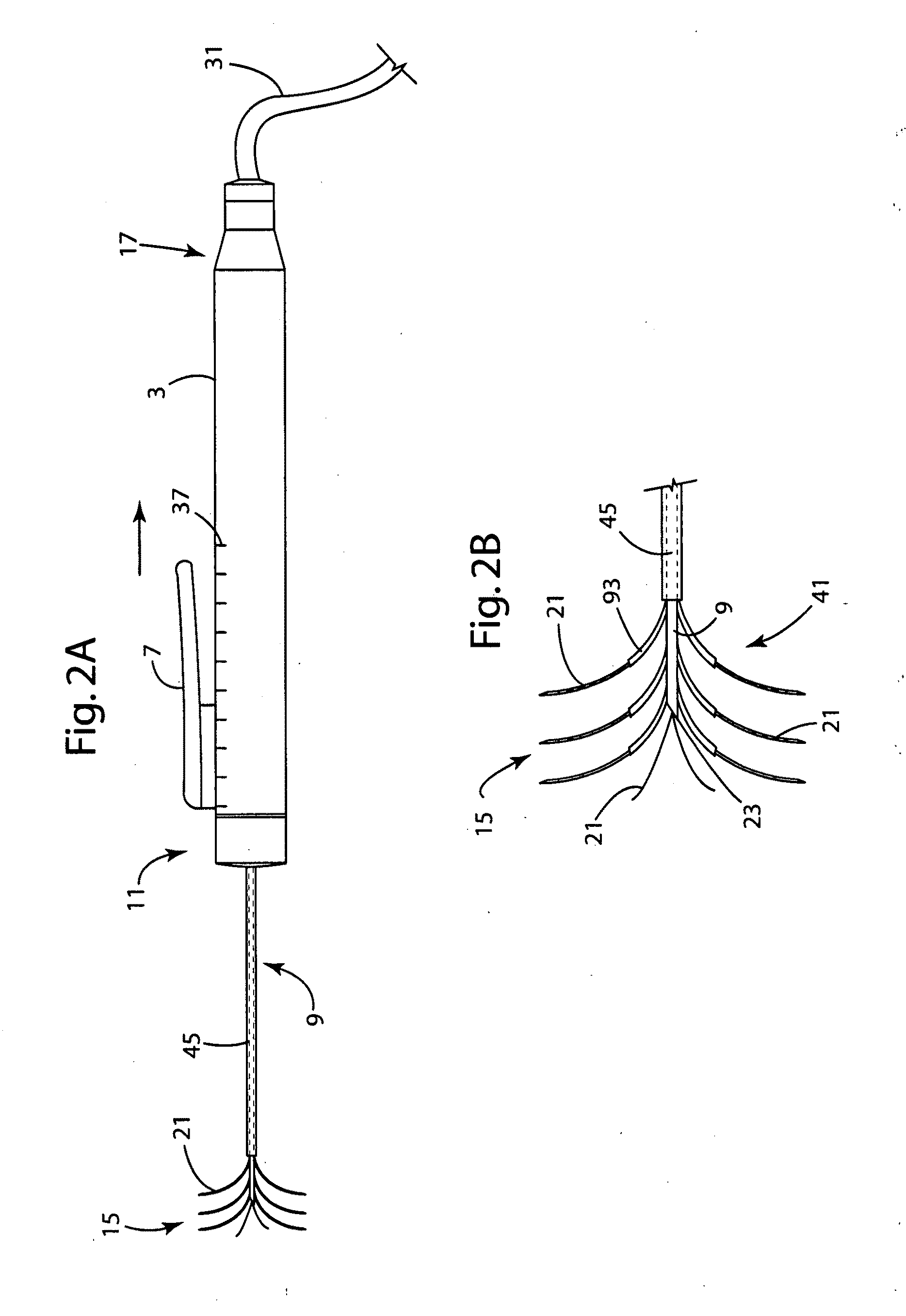Dual Bracketed Energy Delivery Probe and Method of Use
a technology of energy delivery probe and bracket electrode, which is applied in the field of energy delivery probe and treatment, can solve the problems of limiting devices, difficult and time-consuming for practitioners to place multiple needles into patients during treatment, and current single-bracket electrode designs that are difficult to insert and deploy
- Summary
- Abstract
- Description
- Claims
- Application Information
AI Technical Summary
Problems solved by technology
Method used
Image
Examples
example 1
[0122]IRE ablations were performed on 10 different pig liver tissues 107 using an energy delivery probe 1 as illustrated in FIG. 14. To perform the IRE ablation treatment, the probe 1 was percutaneously inserted into the pig liver tissue as described above, and 90 electric pulses of a 70 μsec pulse length were delivered per pair of electrodes 9, 90 at a voltage gradient of 1250 V / cm to each of the target pig liver tissues 107. Other suitable pulse parameters may be used. Voltage gradient (electric field) is a function of the distance between electrodes and electrode geometry, which will vary depending on the size of the tissue sample, tissue properties, and other factors. The amplitude of voltage pulses, duration of each pulse, total number of voltage pulses, and duration between consecutive pulses can be altered, depending on the desired ablation. IRE ablations, when carried out under certain parameters and operating conditions, can selectively spare certain tissues and structures ...
example 2
[0124]In this example, as illustrated in FIGS. 21 through 23, IRE ablations were performed on 9 different pig liver tissues 107 using an energy delivery probe 1 having a distal tip configuration as illustrated in FIG. 14. The IRE ablation procedure was repeated as described in Example 1. Each ablation zone 105 was approximately 5.6 cm in height, along a “Z” axis of a three-dimensional axis. The diameter of the ablation zone 105 was determined my multiplying 0.7 mm, or the thickness of each slice, by 7 slices. Liver tissue sections 1 and 9 were excluded due to the size of the ablation zones in these tissue samples. The COMSOL software predicted that the ablation zone 105 of the ablated tissue in these liver tissue samples 107 would be between about 3.8 cm to about 4 cm in the “Z” axis, when subtracting the minor peaks around the trocars 9, 90. The width of each ablation zone 105, as measured along the horizontal “X” and “Y” axes, was approximately 5 cm, as illustrated in FIG. 22. The...
example 3
[0125]In this example, as illustrated in FIGS. 24 through 26, IRE ablations were performed on 10 different pig liver tissues 107 using an energy delivery probe 1 having a distal tip configuration as illustrated in FIG. 14. The procedure was repeated as described in Examples 1 and 2. Each ablation zone 105 was approximately 5.6 cm in height, along a “Z” axis of a three-dimensional axis. The diameter of the ablation zone 105 was determined my multiplying 0.7 mm, or the thickness of each slice, by 7 slices. Liver tissue sections 1, 9, and 10 were excluded due to the size of the ablation zones in these liver tissue samples 107. The COMSOL software predicted that the ablation zone 105 of the ablated tissue in these liver tissue samples 107 would be between about 3.8 cm to about 4 cm in the “Z” axis, when subtracting the minor peaks around the trocars 9, 90. The width of each ablation zone 105, as measured along the horizontal “X” and “Y” axes, was approximately 4 cm, as illustrated in FI...
PUM
 Login to View More
Login to View More Abstract
Description
Claims
Application Information
 Login to View More
Login to View More - R&D
- Intellectual Property
- Life Sciences
- Materials
- Tech Scout
- Unparalleled Data Quality
- Higher Quality Content
- 60% Fewer Hallucinations
Browse by: Latest US Patents, China's latest patents, Technical Efficacy Thesaurus, Application Domain, Technology Topic, Popular Technical Reports.
© 2025 PatSnap. All rights reserved.Legal|Privacy policy|Modern Slavery Act Transparency Statement|Sitemap|About US| Contact US: help@patsnap.com



